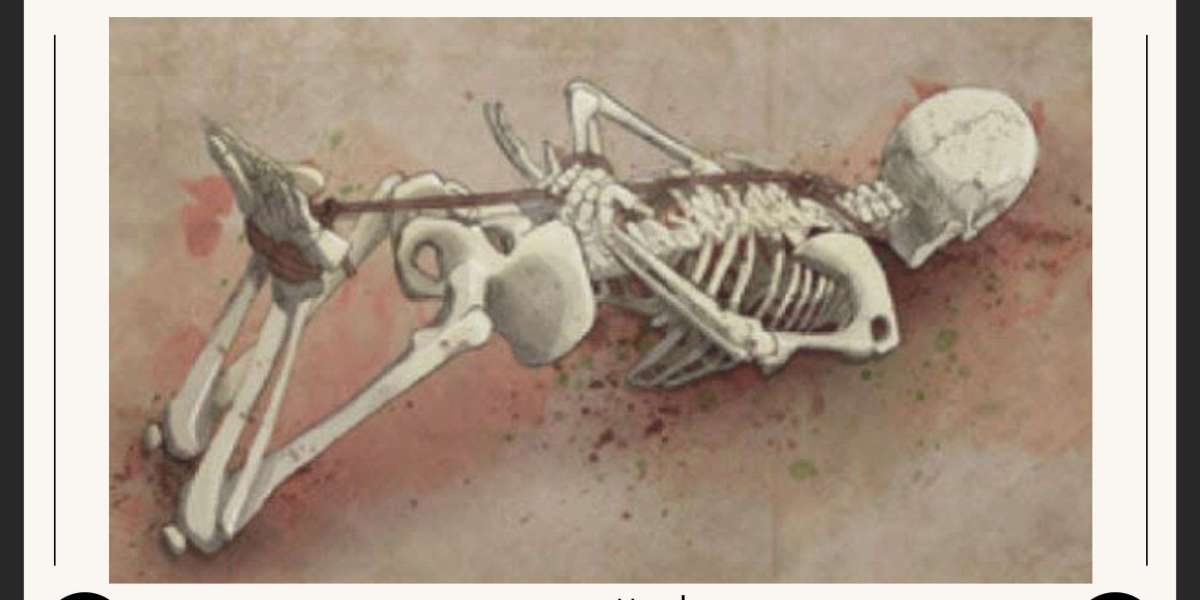Antiquated stays found in France uncover two ladies were reasonable tormented and killed Mafia-style.
The ladies experienced "self-strangulation" utilizing a ligature that bound their lower legs to their necks.
Twenty comparative ceremonial entombments have been found at destinations across Europe.
An archeological revelation in France has uncovered the Stone Age survives from two ladies remembered to have been tormented and forfeited in a type of homicide related with the Italian Mafia.
However the remaining parts were found in 1985, a review distributed last week in the diary Science Advances uncovers the "abnormal" situating of the bodies.
The paper's creators accept the ladies could have passed on by "self-strangulation" utilizing a ligature that bound their lower legs to their necks. The torment is known as "incaprettamento," a crime custom of the Italian Mafia, at times used to rebuff individuals remembered to be swindlers.
A third lady was found in a typical entombment position close by.
"Killing individuals with maniacal ligature strangulation has been deciphered as a type of emblematic self destruction, as it is the person who, by choking themselves, causes their passing," said the review's creators.
The skeletons, saw as in "pit 69" at a site in the town of Holy person Paul-Trois-Châteaux in France's Rhône Valley, are accepted to have been covered at some point somewhere in the range of 4,000 and 3,500 BC in a game plan reliable with summer and winter solstice ceremonies in early cultivating social orders.
The killings might have been important for ceremonial convictions that a human penance could guarantee a decent reap and food security, said the archeologists, taking note of comparative practices existed in the Inca progress of South America.
"There is consistently this thought that someone is passing on and that the harvests will develop," Éric Crubézy, one of the paper's lead creators and a natural anthropologist at Paul Sabatier College in Toulouse, told CNN.
Different translations, detailed Science Advances, accept it is a type of retainer penance, "where officiants killed subjugated individuals, workers, family members, spouses, courtesans, or others to go with their lords, social bosses, or family members into eternity."
One of the ladies had her "lower appendages bowed and a part of grindstone situated on her skull," the review states. The grindstone is an image of horticulture and reap, it said.
One more was in an inclined position, her knees twisted, "with her neck laying on the chest" of the primary lady. This subsequent lady had "two bits of grindstone put on a level plane on her back."
It is believed that the vicious passings would have left the main lady attempting to inhale with the heaviness of the second lady on her neck, while the subsequent lady would have likewise attempted to inhale, potentially prompting heart failure.
All through the Neolithic, or late Stone Age, time, that's what the review expresses "maniacal ligature strangulation" may well have turned into a typical practice related with services and ceremonial locales.
The review looked into skeletons found at other archeological digs across Europe crossing 2,000 years. Analysts observed that there were 20 other likely occasions of comparable ceremonial homicides at 14 unique locales. Self-strangulation was the reasonable justification of death.
The review said the quantity of such ceremonies was possible higher, yet there was lacking data about skeletons at other archeological destinations to reach strong determinations.
At different locales, men and kids have additionally been found, the review said.
The earliest illustration of this strategy for killing was at a Mesolithic site tracing all the way back to some place 5,400-4,800 BC.



